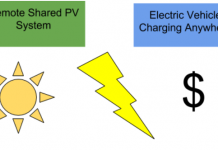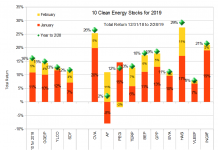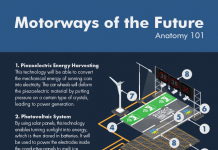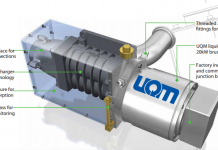John Petersen
In the most under-reported cleantech story of the year, researchers from the National Renewable Energy Laboratory have used an impressive array of computational and modeling tools to prove that the Law of Diminishing Marginal Utility, which holds that the first unit of consumption of a good or service yields more utility than the second and subsequent units, doesn’t have a loophole for plug-in vehicles. The penultimate slide from an NREL presentation at Plug-in 2011 says it all – and proves beyond doubt that cars with plugs are less effective at saving fuel and reducing emissions than conventional hybrids and other simple fuel efficiency technologies.

At the individual vehicle level, the diminishing marginal utility of batteries is self-evident the moment you understand that the first 1.5 kWh of batteries in a Prius-class HEV slash fuel consumption by 33% but it takes a whopping 22.5 kWh of additional batteries to eliminate the other 67% with a Leaf-class BEV. The reality just gets uglier when the analysis moves to a societal level where cars with big batteries can only sabotage national efforts to reduce dependence on imported oil and cut CO2 emissions. They’re the poster child for conspicuous consumption and the elevation of style over substance. Even researchers from the NREL who wanted to reach a contrary conclusion couldn’t make a rational resource sustainability argument. The best they could manage without sacrificing intellectual integrity on the altar of eco-orthodoxy was to conclude that lithium supplies won’t be constrained for a couple decades, which somehow makes the diminishing marginal utility of batteries more palatable. Lithium may not be an issue for a couple decades, but it’s far from a permanent solution. While the NREL didn’t mention them, other non-ferrous industrial metals pose more immediate concerns, particularly when you understand that metal prices are more volatile and increasing more rapidly than oil prices.

I didn’t reprint the NREL graphic because it’s news. Regular readers of this blog already know the facts. I reprinted the graphic because it’s in a form that even a Congressman or Senator can grasp, particularly a Congressman or Senator who’s under the gun to slash wasteful spending and try to get the economy back on a sustainable track. No matter how you define the disease, plug-in vehicles are not a cure, or for that matter a band-aid. There are solutions that can make a substantial difference in national fuel consumption and CO2 emissions, but they’re boring efficiency technologies including Prius-class HEVs, mild hybrids like GM’s eAssist and even stop-start systems that simply turn the engine off while you’re waiting for a stop light. Taxpayer subsidized toys for eco-royalty are not going to work because even if prices fall, fawning acolytes of electric drive can never overcome the diminishing marginal utility of big batteries.
I’ve been a careful observer of Federal energy policy and panacea energy solutions since my graduation from law school in 1979. Over the years I’ve watched policy lurch from one game changer to the next and recoiled in horror at the devastation changing policies and priorities have repeatedly wrought on investors who were foolish enough to buy the latest dream. At this year’s EIA Energy Conference John German, a Senior Fellow and Program Director for the International Council on Clean Transportation closed his presentation with the following slide.

While ancient stock market lore is easily forgotten, it’s important to remember that fuel cell companies like Ballard Power (BLDP) and Plug Power (PLUG) and ethanol companies like Pacific Ethanol (PEIX) lost more than 99% of their once lofty market values when ambitious technology du jour dreams collided with economic reality. Without a clear exemption from the law of diminishing marginal returns Tesla Motors (TSLA), A123 Systems (AONE), Valence Technologies (VLNC) and other companies that want to replace fuel tanks with big batteries can’t possibly avoid the same fate. The surprise winners over the next few years will be stodgy old-line battery companies like Johnson Controls (JCI) and Exide Technologies (XIDE) and emerging technology developers like Axion Power International (AXPW.OB) that understand the green in a customer’s wallet is more important than the green in his cocktail party conversation.
Mark Twain said, “history does not repeat itself but it rhymes.” William Martin wrote, “In America, we wake up in the morning, we go to work and we solve our problems.” We use the tools that are readily available to us and we remain willing to adopt newer and better tools when they prove their merit in a free market and become commercially available at reasonable prices. The time for dreaming is over. We need to wake up, down a pot of coffee, go to work and solve our problems with sensible, affordable and sustainable solutions like compressed natural gas, stop-start idle elimination and a host of conventional fuel efficiency technologies.
Sometimes I wonder whether the world is being run by smart and cynical ideologues who are putting us on, or by economic imbeciles who believe their own hype.
Disclosure: Author is a former director of Axion Power International (AXPW.OB) and holds a substantial long position in its common stock.









You seem to assume that we can sell 14 HEVs for every 3.3 kg of Lithium. But HEVs are still a tiny slice of the market despite their superior economics when compared to PHEVs and EVs. And there does seem to be demand for EVs and PHEVs in the form of the Leaf and the Volt.
If the current EV subsidies at $7500/vehicle were redirected to HEVs at $500 per HEV, would that stimulate the purchase of 15 HEVs for every EV that was not purchased because of the lack of the $7500 rebate? I’d hope so, but I don’t know.
The NREL presentation indicated that they thought HEVs would be demand limited. I’ve always believed PHEVs would cannibalize the HEV market rather than bringing in new buyers who wouldn’t consider a Prius. At present, neither is a substantial market force. But I do find it more than a bit fascinating to have the NREL agree with my long-held premise that from a societal perspective plug-ins are the least beneficial and least sustainable class of electric drive.